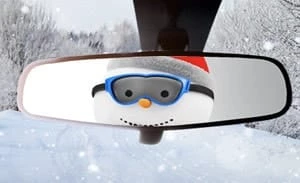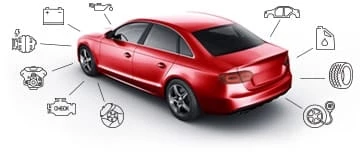Winter driving: the basics
Many people who are competent drivers during the summer months seem to forget their skills with the onset of winter. To find out how drivers can maintain their confidence and control even in inclement weather, we turned to our Michelin driving expert and test driver, Carl Nadeau, to give us winter driving tips.
This first part of a two-part article deals with posture and good driving habits. The second part looks into the hazards of winter driving and how to avoid them.
Posture is key
Before discussing dangerous winter driving conditions, Carl stresses a basic principle: “There are things we should be doing year round that we tend not to do. It’s important to sit in the right position. It will make a big difference when you drive in the winter.”
According to him, the first thing to do when you sit in a car is to adjust your seat distance so you can use emergency braking techniques. Carl explains, “In this position you should be able to depress the brake pedal completely without fully extending your leg. This allows you to apply the necessary force to the brake, but still gives you a lot of room, which is essential in winter conditions.”
Maintaining control
The second step is to adjust your seat and the steering column. When you stretch out your arm with your shoulder blades resting against the back of your seat, your wrist should be directly above the steering wheel. Your hands should always be on the wheel at the 9 and 3 o’clock position, with your thumbs inside to guide you.
“This is especially important in difficult driving conditions when there is a greater risk of losing control,” says Carl. “Those drivers who drive with gloves risk having their hands slip on the steering wheel.”

“Maintaining the correct driving position will allow you to regain control if the rear of the car begins to skid. Having your thumbs inside the steering wheel will let you know if the wheels are straight, whereas drivers who drive with one hand can’t tell where the wheels are pointing,” adds Carl.
Look straight ahead
Did you know that the average driver is inclined to focus on what makes them nervous? According to Carl, it’s a bad reflex. “You need to look as far ahead as possible and think ahead too. You always have to look in the direction of where you want to go and never at what makes you nervous,” advises Carl.
Unfortunately if you look at a particular spot, your body will steer the car towards it. When a car begins to skid and go out of control, you have to point your eyes in the direction you want the car to go. Your hands will naturally follow.
Stay Zen
This all depends on how you feel. For instance, you always have to grip the steering wheel lightly.
“Many drivers say that whenever they drive under difficult conditions, they get cramps in their neck, shoulders, forearms or back. These drivers are very tense, which impedes precision driving. You have to let go of the tension at the wheel,” says Carl.
Carl highlights a critical tip for drivers: “Talk to yourself, take one hand off the wheel for a moment, and move your arm to relax it. Then, do the same thing with the other arm. If this doesn’t work, slow down a little more. When you slow down, you lower your stress level; you relax a little, so you’re able to drive more skillfully and with greater precision.”
A light and deft touch
A good driver can be compared to a good pianist. For example, when someone plays the piano, their fingers move lightly, their hands are relaxed, and their bodies are not tense. It’s the same when you drive a car. You have more finesse with a lighter touch and you’re able to better feel what’s going on. You’ll recognize dangerous situations faster and you’ll be more in control behind the wheel during all driving conditions.
Colder weather reduces your tire pressure. Not only can underinflated tires wear out more quickly, they can also affect your driving. You should check your tire pressure monthly and maintain the level recommended by the manufacturer as indicated in your user’s manual.
This article is part of our car information hub
Discover the other articles featured


